This post has been republished via RSS; it originally appeared at: The Official Microsoft Blog.
Today, at Computex in Taipei, Microsoft executives Roanne Sones, CVP OS Platforms and Rodney Clark, VP IoT Sales, shared the keynote stage with me to showcase Microsoft 365, Windows platform and Azure IoT technologies and services that device partners can use to deliver innovative modern PC experiences and build a new generation of connected devices and IoT solutions. In addition, they provided perspective as to how intelligent edge ecosystem partners can fuel business transformation by working together to build edge to cloud IoT solutions.
Microsoft 365 and Windows
The PC ecosystem continues to innovate and build modern Windows PCs that deliver breakthrough performance, enable new scenarios and offer the ultimate in secure, intelligent edge devices that customers love. Partners including Acer, Asus, Dell, HP, Lenovo and MSI have recently announced new modern PCs that will delight both creators and gamers.
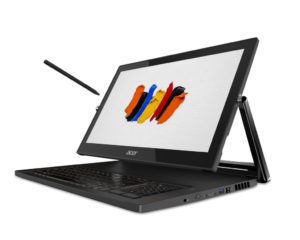 Acer’s ConceptD 9 creator notebook features a 4K UHD IPS PANTONE Validated display. Colors are as accurate as possible as the display covers 100 percent of the Adobe RGB color gamut. This creator notebook stays quiet with Acer’s 4th generation AeroBlade 3D Fan with a noise reduction mechanism that emits less than 40 db of noise — equivalent to the sound level of a library — while maintaining high computing and graphics performance.
Acer’s ConceptD 9 creator notebook features a 4K UHD IPS PANTONE Validated display. Colors are as accurate as possible as the display covers 100 percent of the Adobe RGB color gamut. This creator notebook stays quiet with Acer’s 4th generation AeroBlade 3D Fan with a noise reduction mechanism that emits less than 40 db of noise — equivalent to the sound level of a library — while maintaining high computing and graphics performance.
The ASUS ZenBook Pro Duo (UX581), an ultraportable laptop that includes a 4KOLED UHD ASUS ScreenPad Plus (3840 x 2160), a full-width secondary touchscreen (3840 x 1100) that expands and enhances the interactive capabilities of the original ASUS ScreenPad. The display is a frameless four-sided ASUS NanoEdge design, with ultra slim bezels for immersive visuals, in an ultra-compact form factor.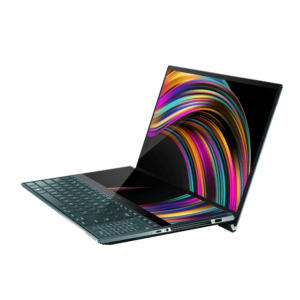 The new Dell XPS 13 2-in-1 packs more performance in a thinner design and larger display. Dell’s first laptop with Intel’s Ice Lake-U 10nm 10th gen processors and features adaptive performance based on the latest Intel Dynamic Tuning Technology, which proactively changes the power of the CPU according to the performance of the workload. It comes with a redesigned thermal system to cool the higher performing processor, while creating an overall 8% thinner 2-in-1 than the previous generation.
The new Dell XPS 13 2-in-1 packs more performance in a thinner design and larger display. Dell’s first laptop with Intel’s Ice Lake-U 10nm 10th gen processors and features adaptive performance based on the latest Intel Dynamic Tuning Technology, which proactively changes the power of the CPU according to the performance of the workload. It comes with a redesigned thermal system to cool the higher performing processor, while creating an overall 8% thinner 2-in-1 than the previous generation.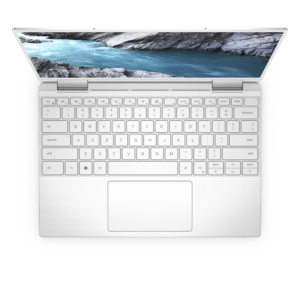 HP recently announced the OMEN X 2S. On top of a variety of awesome use cases for messaging, music apps, watching videos, stream chats and OMEN Command Center, it features a real-time screen mirroring feature further bolsters the OMEN X 2S, by cutting and magnifying parts of the main screen – such as copying the map portion of a racing game – to the second screen, ensuring centered vision and more vertical head movement.
HP recently announced the OMEN X 2S. On top of a variety of awesome use cases for messaging, music apps, watching videos, stream chats and OMEN Command Center, it features a real-time screen mirroring feature further bolsters the OMEN X 2S, by cutting and magnifying parts of the main screen – such as copying the map portion of a racing game – to the second screen, ensuring centered vision and more vertical head movement.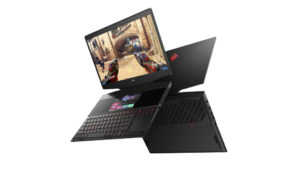
The new Lenovo ThinkPad T495 offers feature upgrades without compromise, and provides a high level of hardware security and 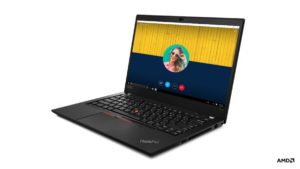 manageability. It has longer battery life, and increased performance by up to 18 percent (compared to benchmarks of prior generations). And since security is top of mind for everyone, Lenovo is delivering greater peace of mind with just a slide of the ThinkShutter, the all-in-one integrated camera security cover that physically protects ThinkPad users from malicious webcam snoopers.
manageability. It has longer battery life, and increased performance by up to 18 percent (compared to benchmarks of prior generations). And since security is top of mind for everyone, Lenovo is delivering greater peace of mind with just a slide of the ThinkShutter, the all-in-one integrated camera security cover that physically protects ThinkPad users from malicious webcam snoopers.
Featuring the latest RTX graphics and 9th Generation Intel Core i9 processor and Wi-Fi 6, the new MSI GE65 Raider can easily handle demanding AAA game titles. Its ultra-fast 240Hz IPS-level thin bezel display ensures sharp and clear images in a compact form factor, and the new two-toned mesh design at the underside of the unit, inspired by a dragon theme, provides better ventilation and prevents hot air from recirculating. These new modern PCs and innovative devices the ecosystem will continue to build and bring to market in the future require a modern operating system. An OS that provides a set of enablers that deliver the foundational experiences customers expect from their devices, and includes a set of delighters that deliver innovative human centric experiences. Enablers include seamless updates – with a modern OS updates are invisibly done in the background; the update experience is deterministic, reliable, and instant with no interruptions! A modern OS, is also secure by default, the state is separated from the operating system; compute is separated from applications; this protects the user from malicious attacks throughout the device lifecycle. Always connected -with a modern OS Wifi, LTE 5G will just work – and users never have to worry about a deadspot. All of a users devices are aware and connected to each other. A modern OS provides sustained performance, from the moment a user picks up their device – everything is ready to go – without having to worry about the next time the PC needs to be charged. These enablers will satisfy customer’s basic needs, but to truly differentiate we must also delight them. A modern OS does this by enabling cloud-connected experiences that use the compute power of the cloud to enhance users experiences on their devices. These experiences are powered by AI, so a modern OS is aware of what a user is doing tomorrow and helps them get it done, and it enhances applications making them more intelligent. A modern OS is also multi-sense. People can use pen, voice, touch, even gaze – what ever input method a user wants to use works just as well as the keyboard and mouse. Finally, a modern OS provides the ultimate in form factor agility. A modern OS has the right sensor support and posture awareness to enable the breadth of innovative form factors and applications that our partner ecosystem will deliver
These new modern PCs and innovative devices the ecosystem will continue to build and bring to market in the future require a modern operating system. An OS that provides a set of enablers that deliver the foundational experiences customers expect from their devices, and includes a set of delighters that deliver innovative human centric experiences. Enablers include seamless updates – with a modern OS updates are invisibly done in the background; the update experience is deterministic, reliable, and instant with no interruptions! A modern OS, is also secure by default, the state is separated from the operating system; compute is separated from applications; this protects the user from malicious attacks throughout the device lifecycle. Always connected -with a modern OS Wifi, LTE 5G will just work – and users never have to worry about a deadspot. All of a users devices are aware and connected to each other. A modern OS provides sustained performance, from the moment a user picks up their device – everything is ready to go – without having to worry about the next time the PC needs to be charged. These enablers will satisfy customer’s basic needs, but to truly differentiate we must also delight them. A modern OS does this by enabling cloud-connected experiences that use the compute power of the cloud to enhance users experiences on their devices. These experiences are powered by AI, so a modern OS is aware of what a user is doing tomorrow and helps them get it done, and it enhances applications making them more intelligent. A modern OS is also multi-sense. People can use pen, voice, touch, even gaze – what ever input method a user wants to use works just as well as the keyboard and mouse. Finally, a modern OS provides the ultimate in form factor agility. A modern OS has the right sensor support and posture awareness to enable the breadth of innovative form factors and applications that our partner ecosystem will deliver
These enablers and delighters underpin our vision for a Modern OS, they will provide the foundational elements for an evolution of the PC ecosystem and enable partners to deliver the more human-centric experiences of tomorrow. Microsoft is investing to enable these modern OS experiences, and to deliver new ones that take advantage of silicon advancements, powerful PCs, the cloud and power of AI. Experiences like an Asian Inking platform, cognitive recognition services that help with photo tagging and new Your Phone capabilities that let users mirror their Android phone screen on their PC and use the PC mouse and keyboard to interact with phone apps and content using either Wi-Fi or LTE.
Intelligent Edge and the Internet of Things
IoT is another area of tremendous growth and unparalleled innovation, and our broad ecosystem of IoT partners including chip makers, hardware manufacturers, solution providers and aggregators are building a diverse assortment of IoT devices and solutions for businesses across industries. At Microsoft our goal is to simplify IoT – from the cloud down to the smallest MCU based devices, and we do this by meeting our partners and customers where they are, with the right intelligent cloud services, software and development tools they need to get devices connected, and manage solutions at scale.
Device partners are utilizing Azure IoT Central, Azure IoT Edge and Windows IoT to build intelligent edge devices that can be connected to the cloud and used in solutions that deliver business results. Today at Computex, we announced that Microsoft and NXP are continuing their efforts to bring the full range of NXP systems-on-a-chip (SoCs) to Windows IoT. The board support package (BSP) for the i.MX6 SoloX applications processors will be generally available in June 2019. Additional BSPs for members of the i.MX6 series are expected to become available later this summer, with BSPs for the i.MX7 and i.MX8 series released later this year.
We’ve recently announced additional services and programs that hardware manufacturers can use to get their devices connected to the cloud and included in IoT solutions.
IoT Plug and Play, a new open modeling language to connect IoT devices to the cloud seamlessly, helps device partners navigate one of the biggest challenges they face — deploying IoT solutions at scale. Previously, software had to be written specifically for the connected device it supported, limiting the scale of IoT deployments. IoT Plug and Play provides partners with a straightforward way to model the capabilities and data coming from their IoT devices and will provide customers with a large portfolio of partner-certified devices that can easily be made to work with any IoT solution, often without writing any new code.
Azure IoT Central is a fully managed global IoT SaaS (software-as-a-service) solution that makes it easy to connect, monitor, and manage IoT assets at scale. Bring connected products to market faster while staying focused on customers. New custom dashboard features allow partners to bring their own brand and user experience to their IoT solution, and benefit from the built-in security, reliability, device connectivity and role-based user account management provided by IoT Central.
Microsoft Azure IoT Device Agent V2 for Windows 10 IoT, lets operators configure, monitor and manage their devices remotely from their Azure dashboard. It provides an open-source, ready to build package that: creates and manages the Azure IoT Hub identities on the device, manages the cloud connection and its renewal, provides a plug-in model for platform components, which allows easy onboarding to various Azure services, including discovery, initialization, error reporting and state aggregation, comes with a set of ready-to-ship plug-ins for commonly used platform components and leverages Azure IoT Module Twin so a separate UWP app is not required to connect to Azure IoT Hub.
Businesses who are implementing IoT solutions want to achieve time to value as quickly as possible. And, when partners take advantage of Microsoft’s comprehensive, trusted and easy to use edge to cloud platforms, embrace business model transformation and work together they can reduce the complexity of IoT, and accelerate time to value for customers. Leveraging a common architecture and repeatable solutions based on accelerators can eliminate up to 80 percent of the development work on a new solution, and collaborating with compatible partners offers greater speed, scalability, and depth of expertise. All of which means customers get their IoT solutions up and running faster — hastening ROI and increasing profitability.
Techsun is a great example of an ecosystem partner who is embracing IoT transformation. They successfully collaborated with Compal to design an AI camera, IoT sensor and IOT management platform that leverages Microsoft services including Edge AI, Azure IoT and cognitive services to develop cloud to edge AI algorithms, a data management platform and a business management platform for retail. A variety of retailers have implemented Techsun’s Retail Next solution and are using consumer flow and store operation data along with information on consumer behavior that the solution makes available to improve customer service, increase efficiency and enhance store layouts. By developing this new solution, Techsun has transformed itself from being a traditional Dynamics partner into a leading retail digital service provider in China.
Advantech developed an end-to-end industry safety solution that includes the BTI MIOTY LPWAN wireless solution running on an industry-standard Windows IoT gateway and a wearable device that monitors heart rates. Industrial customers can use this solution to gather health data for their people working in high-risk industrial environments, send the data to the Microsoft Cloud where Hitachi Solutions’ IoT Service Hub is used to provide actionable insights on workers’ health and to send alerts when people are in danger. Employers, such as mining site operators, can deploy this end-to-end solution to protect their workforce with unprecedented responsiveness at a fraction of the cost of previously available technologies.
The breadth of innovative intelligent edge devices and solutions our partners, across the PC and IoT ecosystems, have delivered in the last year is incredible, and we’re just getting started! The opportunities we all have to empower people, drive growth and enable business transformation, when we use the power of the cloud and AI to build intelligent edge solutions, are limitless. I look forward to the innovation we will deliver together.
The post Enabling innovation and opportunity on the Intelligent Edge appeared first on The Official Microsoft Blog.
